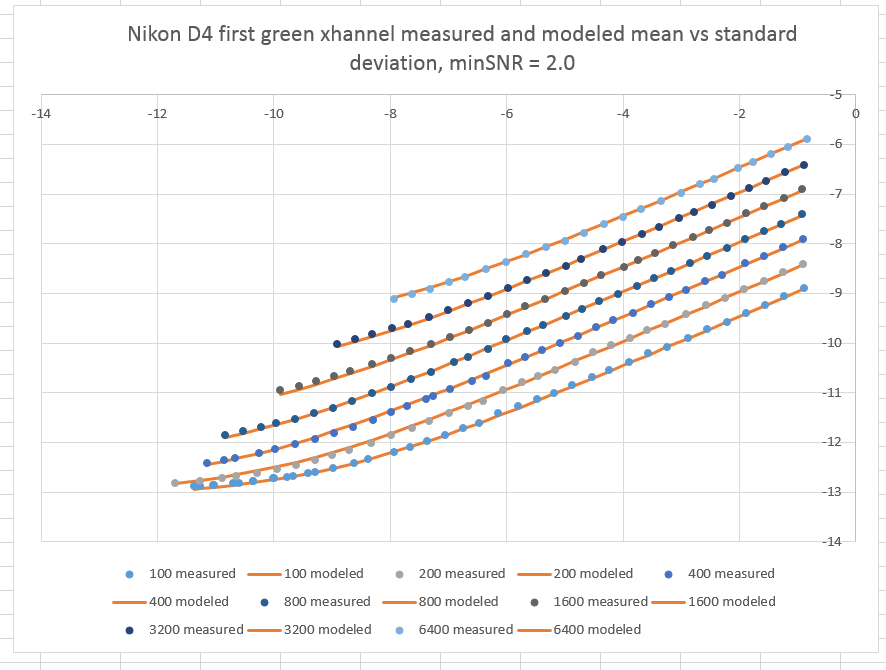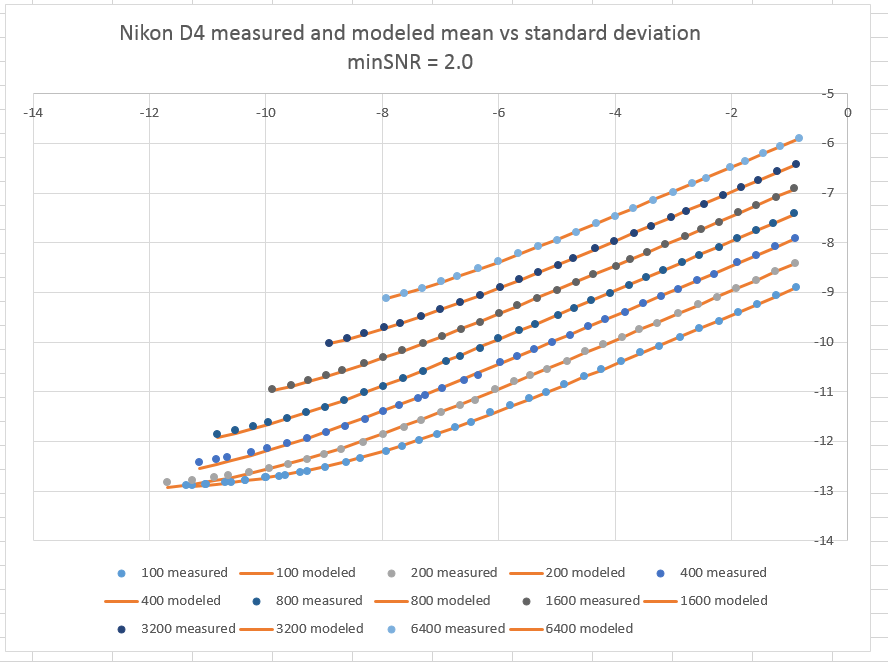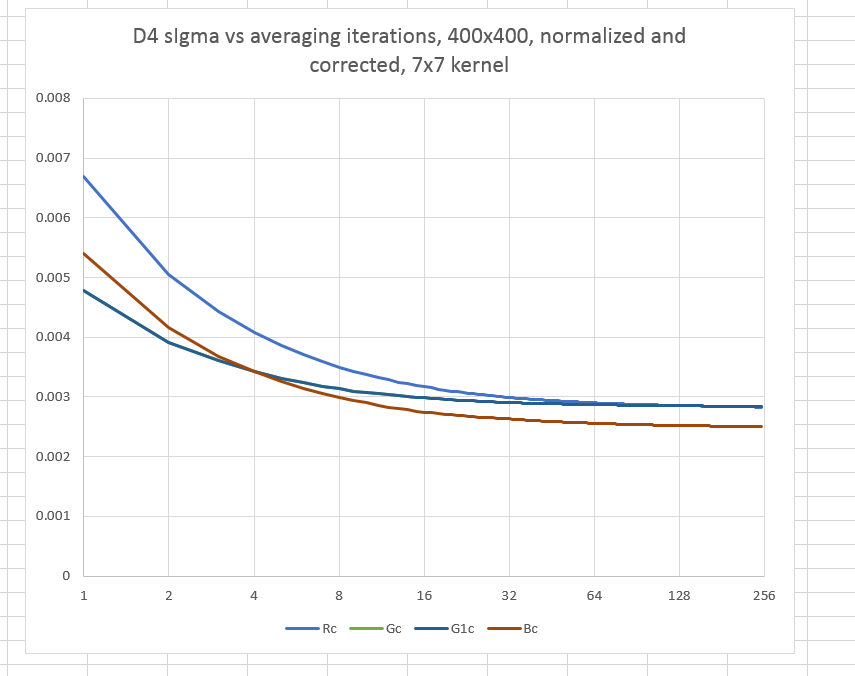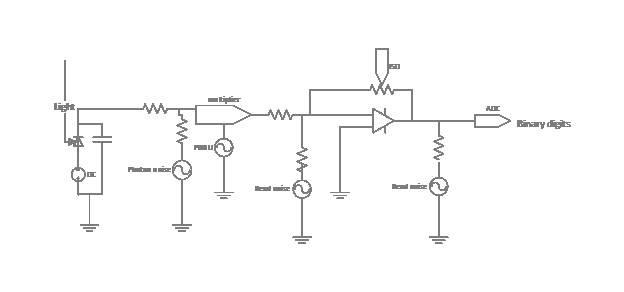Warning: this is going to be a geeky, inside-baseball post. Unless you are interested in what goes on behind the curtain when models are fitted to data, I suggest you pass this one by. In the previous post, I talked about using optimum-seeking methods to adjust the three parameters of the modeled camera – full… [Read More]
Archives for 2014
Modeling ISO-induced variations in read noise
In yesterday’s post, I showed results of the photon transfer analysis programs modeling the Nikon D4’s full well capacity and read noise for each ISO setting of interest. Today, I’d like to show you what happens when you attempt something more challenging: modeling the behavior of the ISO adjustment knob as well. To do this,… [Read More]
Automatic measurement of photon and read noise
I’m going to set PRNU aside, and get on with the photon transfer main event: photon noise and read noise. The reason for moving on so quickly from PRNU is not because I’ve exhausted the analytical possibilities — I’ve just scraped the surface. But with modern cameras, PRNU is not normally something that materially affects… [Read More]
Sensor photon transfer analysis: PRNU
There are two groups of exposures that need to be made to characterize the photon transfer characteristics of a sensor. Both are flat-field images. If you want to use a white or gray card, illuminate it evenly, defocus the lens, use a fairly long focal length (135mm is my favorite), and crop to the central… [Read More]
A single-pixel sensor model
In analyzing the photon transfer performance of a digital camera, it is usual to construct a model of the camera’s imaging properties, and then determine the parameters of these properties should the camera under test conformed to the model. It is also useful to know those areas for the camera does not work as the… [Read More]
- « Previous Page
- 1
- 2
- 3
- 4
- 5
- 6
- …
- 62
- Next Page »



